Why choose a bass ukulele?
 With many musical instruments to select from, why pick a bass ukulele rather than the other types?
With many musical instruments to select from, why pick a bass ukulele rather than the other types?
As the name suggests, this instrument specializes in producing bass sounds. So if you’re a fan of low end tones, then this is the instrument to pick.
Not only do they cover a much lower register compared to other ukuleles but they’re certainly attractive. The materials and finishes used in most bass ukuleles make them stunning musical instruments to look at; and it makes them durable.
From the reviews above, it’s clear how bass ukuleles are extremely small and lightweight. You won’t face any challenges moving your instrument around. But despite being small, they produce an incredibly loud sound.
Features to consider before buying a bass ukulele
For the ordinary man, these instruments look almost identical. But we’ll outline the key features you need to inspect on each model before making your final pick.
Types
The first thing you’ll probably need to consider before buying a bass ukulele is the type. This is because the type significantly influences the body of the instrument which affects sound quality. But generally the type you pick is entirely a matter of preference as it depends on your style of music. There are basically three types to pick from:
- Electric: With electric bass ukuleles such as the MiNi 4 u-bass, the body is solid. But the disadvantage of a solid body is that it can’t be heard without the amp for ukulele. Generally, electric bass ukuleles produce sounds that are reminiscent of electric bass guitars.
- Acoustic: When it comes to the acoustic bass ukuleles, they feature hollow bodies. And they give you the flexibility to play the instrument with or without amplification. This type produces a sound that more or less resembles an upright bass.
- Acoustic-electric: Most items reviewed on or list are acoustic electric ukuleles such as the Donner DUB-1. These are very versatile and allow you to play both acoustically or after plugging in.
Materials used for body
The materials used in the construction of the ukulele will determine durability and how the overall instrument looks. In some cases, the materials on the body also affect the sound, tone and quality of the instrument.
From our reviews it’s clear how all our products are made up of variations of wood—with the most common being mahogany and walnut. Mahogany is classified under soft wood and ukuleles made of this material produce warm mellow tones. The Caramel CUB402 is an example of an instrument made using mahogany.
In actual fact mahogany is known to produce even better sound as it ages. Wood generally makes the instrument attractive plus it guarantees its durability. The wood is usually treated with lacquers to increase the product’s lifespan.
Other types of wood used on a bass ukulele’s body include koa, maple and rosewood.
Some materials used are steel and plastic although these aren’t very common in this niche of the industry.
Fretboard and neck materials
The material used on the fretboard and neck of the ukulele also influences the sound it produces as well as the aesthetics. With most ukuleles, the materials used on the body are usually the same as those found on the neck. We’ll list a few examples:
- Rosewood: This material can contribute to the quality of high tones and give depth & warmth to the overall sound.
- Ebony: Most high end guitars have necks made of ebony. It’s an extremely hard and dense wood that improves the sound clarity.
- Pau Ferro: Like ebony, Pao Ferro is also dense and hard but has only started gaining popularity recently. Plus it’s extremely attractive and immediately enhances the ukulele’s aesthetics.
- Maple: Maple also improves the tone of the guitar by enhancing clarity, crispness and definition.
Finish
The finish on the ukuleles largely influences the overall look of the instrument. In addition, depending on the finish used, it can protect the ukulele from premature damage. Common finishes used on bass ukuleles include gloss, satin, vanish and lacquer:
- Satin: Those with a satin finish usually have a soft and matte appearance. This is the finish you want if you prefer a natural looking instrument.
- Gloss: Ukuleles with a gloss finish give off an attractive shiny appearance which resembles a mirror-like look.
- Painted: Some manufacturers paint the ukes with bright bold colors. But these seldom look very attractive compared to the other types.
- Lacquer: Lacquer is a hard protective coating that protects the wood on the instrument from damage.
Frets
Do you want a bass ukulele that’s fretted or fretless? Generally most experienced players prefer fretted instruments to fretless. Why?
With fretless boards you can play the instrument high up on the neck which is something you can’t do with the fretted bass ukuleles. This is necessary since these instruments are notorious for bad intonation so playing high up significantly improves the sound.
Also, fretless instruments allow for better flat tuning especially if the strings become loose.
But we’ll point out that only experienced players can play the fretless ukuleles. Beginners? Not so much.
Weight
We’ve concluded that most of these bass ukuleles are pretty light compared to the other types. But each product varies in weight and this ultimately determines how easy the instrument is to carry around. After all, you will be traveling with this instrument from one gig to another.
The weight will also affect handling of the instrument. Heavier ukuleles may not be very comfortable to handle so you may not be able to play the instrument for long.
On the other hand, a lighter ukulele is much easier to handle and play.
Extra features
 There are a few extra features you need to consider before buying your instrument. You just need to determine if you really need them. We’ll highlight a few features worth considering.
There are a few extra features you need to consider before buying your instrument. You just need to determine if you really need them. We’ll highlight a few features worth considering.
Types of Strings
In our reviews, we made a lot of reference to the strings found on the instruments. The strings will to a large extent determine how easy—or difficult—it’ll be for users to play the instrument. We list the common types:
- Polyurethane: The general consensus according to most musicians is that strings made of polyurethane have a “rubber band feel”. They are both dense and thick. As a result such strings have a long “break-in’’ time as you give them room to stretch. Only after they have stretched will you find it easier to run your fingers through. And this usually takes at least two weeks. The Kala Wanderers U-Bass is an example of an instrument with polyurethane strings.
- Aquila Thunderguts: Most ukuleles are made using these strings for example the Luna Bari Bass ukulele. And the reason for their popularity is that they are easy to operate.
- Nylon: Some ukuleles such as the MiNi 4 string model have nylon strings which feel similar to standard bass strings. If you’ve ever had any experience playing a standard bass guitar, you can pick a guitar which has these strings. The only downside to this type is that they’re rather expensive.
Appearance
Who said you can’t play your instrument in style? While functionality and performance is important, you don’t have to sacrifice aesthetics. Why not pick an instrument that plays well and looks attractive?
We’ve reached the conclusion that bass ukuleles made of Mahogany are visually pleasing. But of course this is entirely a matter of preference.
Warranty
It’s not uncommon for these instruments to malfunction or get damaged. The least you can do to protect your investment is to purchase an ukulele that comes with a manufacturer warranty on all defects.
Bag
Some manufacturers include a bag with their product. You’ll agree that a protective bag will certainly keep your instrument safe from damage when it’s not in use. In addition, this bag will also make it easy to transport your ukulele.
Some bags are even padded to allow for comfortable carrying of your instrument with minimal shoulder fatigue.
How to tune your bass ukulele
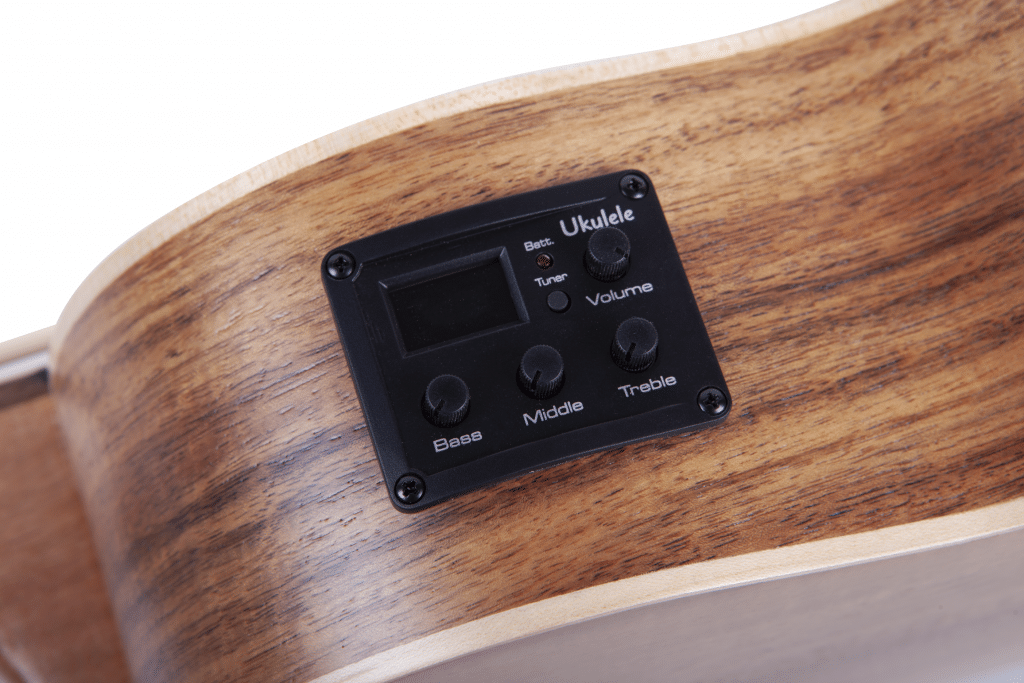 Tuning your bass ukulele can be tricky initially, but once you figure it out, it’ll be a walk in the park. Hopefully the following tips will make it easy for you if it’s your first time.
Tuning your bass ukulele can be tricky initially, but once you figure it out, it’ll be a walk in the park. Hopefully the following tips will make it easy for you if it’s your first time.
If you’ve ever tuned a bass or upright bass guitar, then you’re in luck because the process is almost the same.
As you might be aware, a standard bass ukulele is tuned to the notes E, A, D to G. Just keep the following three easy steps in mind.
Change the Strings
If you purchase a bass ukulele and it has subpar strings, the first thing you want to do is to change them. This is because not only are they difficult to tune but they don’t produce a good sound.
If you want, you could give them some time to break in but if they don’t change, then consider purchasing a new set. This will certainly save you a great deal of frustration.
You must also change the set regularly. The frequency at which you decide to change them is entirely up to you but just make sure it’s often enough. Changing them is important because over time, these strings tend to get brittle. Plus, they’re also likely to get damaged because of the constant pressing on the frets. Both situations will definitely make it difficult to tune your instrument. Besides, a new set will significantly enhance the sound quality.
Pull the Slack Out
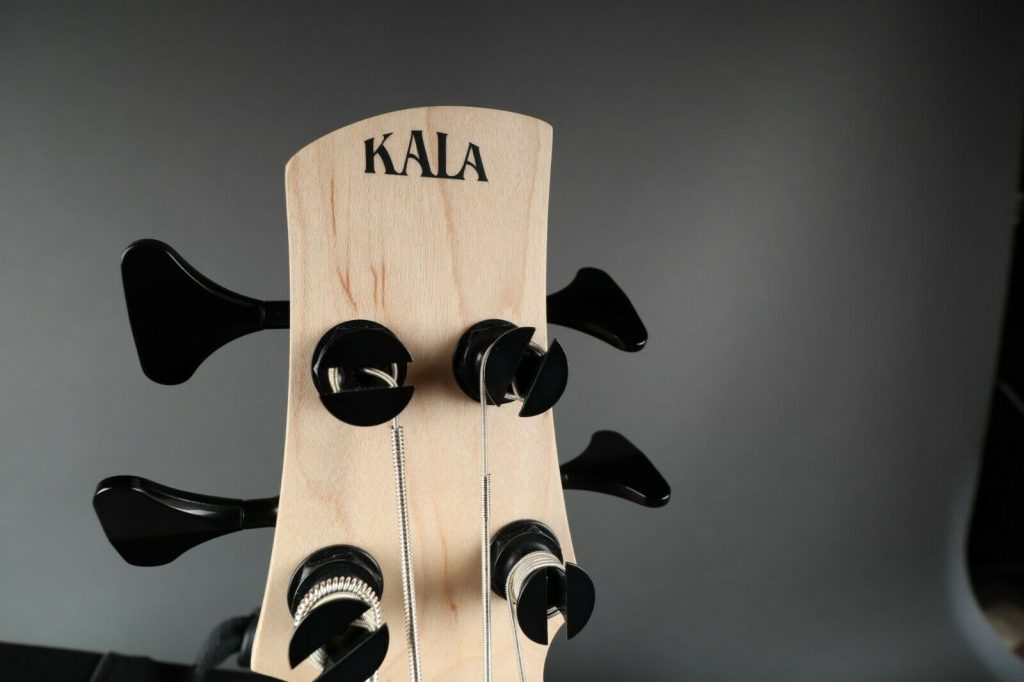 After changing the strings, you must pull the slack out. Because most bass ukulele strings are both thick and dense, they tend to stick to the nut more than they do to the other strings. Unfortunately, this will cause tension along the nut causing the strings to miss a tune.
After changing the strings, you must pull the slack out. Because most bass ukulele strings are both thick and dense, they tend to stick to the nut more than they do to the other strings. Unfortunately, this will cause tension along the nut causing the strings to miss a tune.
But not to worry, by simply taking each string and gently pulling it away from the body, this immediately solves the problem. By doing this you’re stretching the strings to prevent them from sticking to the nut. As a result, the tension is minimized and the strings will play properly.
We’ll reiterate that the pulling must be as gentle as possible to avoid damaging the strings altogether.
Tune Upwards not Downwards
The direction in which you tune is extremely important. As a general rule of thumb, each time you’re tuning your instrument always make sure that you tune from below the note you’re attempting to reach. This basically means if you’re above the note, tune downwards first before tuning up.
The reason for this is that this process prevents the strings from sticking to the nut. As a result, the strings will hold a tune for a much longer period.
Alternatively you can tune your instrument using an ukulele tuning app and the most common types are the:
- Android Fine Chromatic Tuner: This app uses the built-in mic located on your phone to help you tune the instrument.
- iPhone Free Chromatic Tuner: This app can be downloaded from iTunes.
- Chord: This app works on both Apple and Android devices.





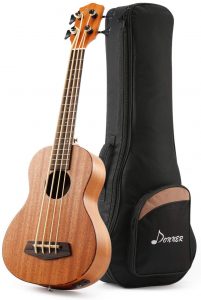
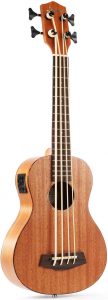
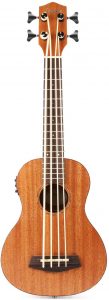
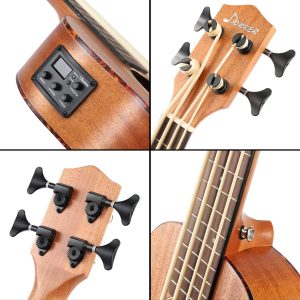
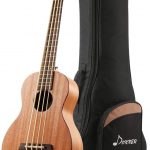
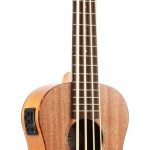
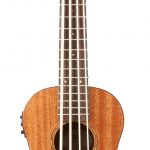
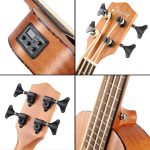



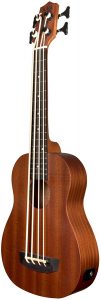

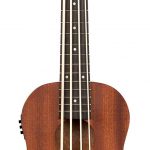
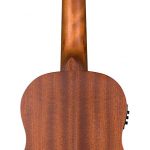
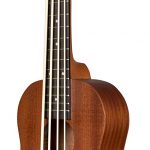



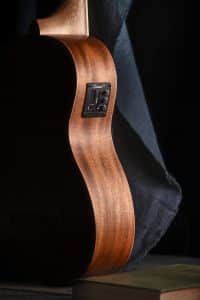

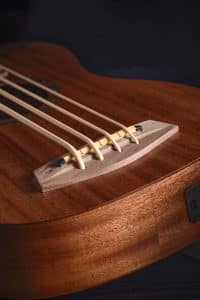
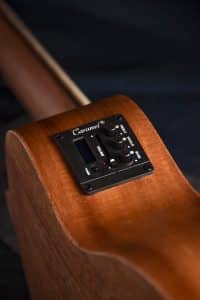






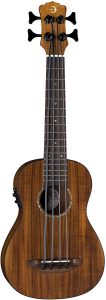
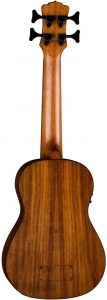
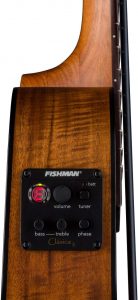
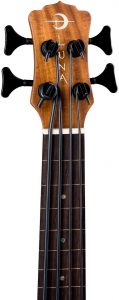
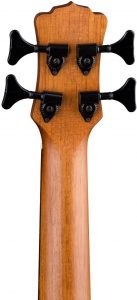
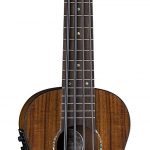
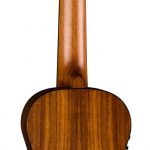

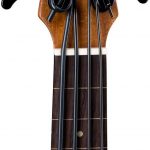
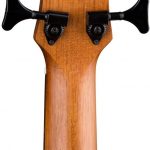
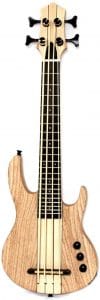

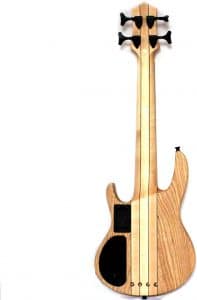
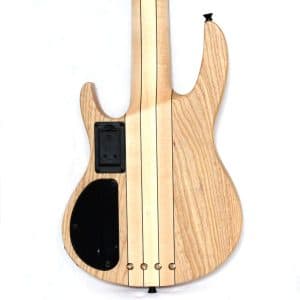
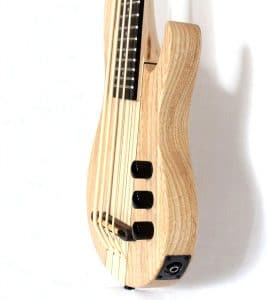
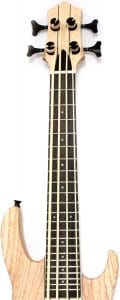
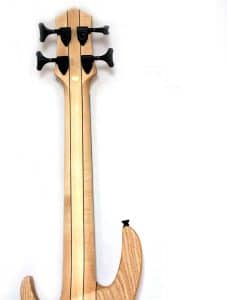
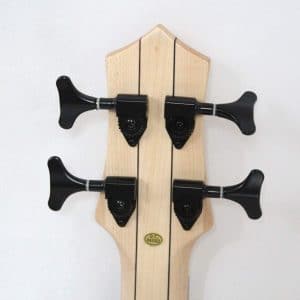
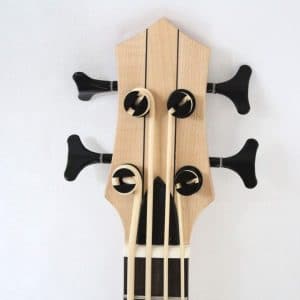
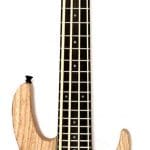
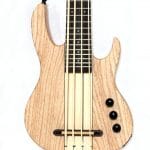
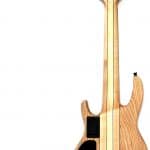
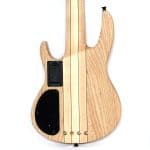
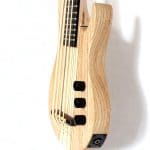
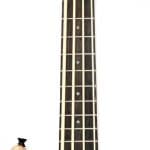
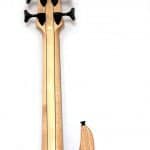
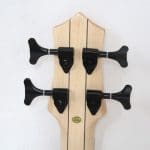
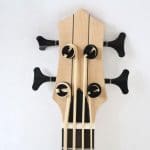
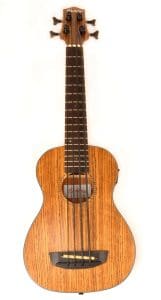
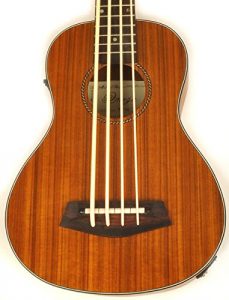
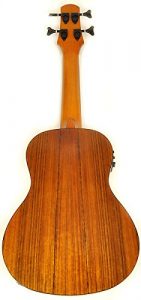
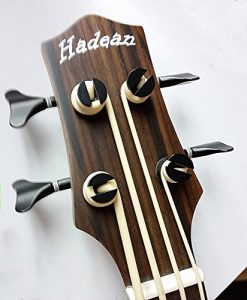
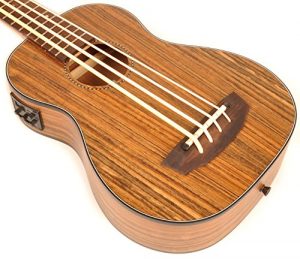
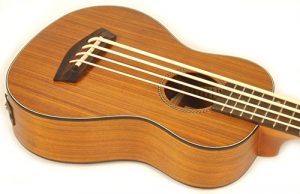
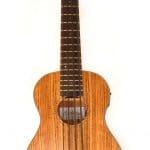
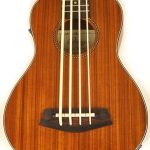
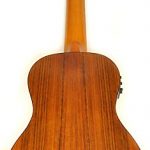
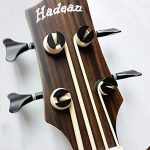
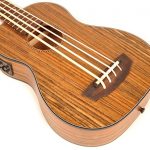
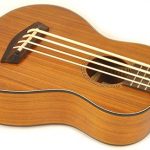
 With many musical instruments to select from, why pick a bass ukulele rather than the other types?
With many musical instruments to select from, why pick a bass ukulele rather than the other types? There are a few extra features you need to consider before buying your instrument. You just need to determine if you really need them. We’ll highlight a few features worth considering.
There are a few extra features you need to consider before buying your instrument. You just need to determine if you really need them. We’ll highlight a few features worth considering. Tuning your bass ukulele can be tricky initially, but once you figure it out, it’ll be a walk in the park. Hopefully the following tips will make it easy for you if it’s your first time.
Tuning your bass ukulele can be tricky initially, but once you figure it out, it’ll be a walk in the park. Hopefully the following tips will make it easy for you if it’s your first time. After changing the strings, you must pull the slack out. Because most bass ukulele strings are both thick and dense, they tend to stick to the nut more than they do to the other strings. Unfortunately, this will cause tension along the nut causing the strings to miss a tune.
After changing the strings, you must pull the slack out. Because most bass ukulele strings are both thick and dense, they tend to stick to the nut more than they do to the other strings. Unfortunately, this will cause tension along the nut causing the strings to miss a tune.









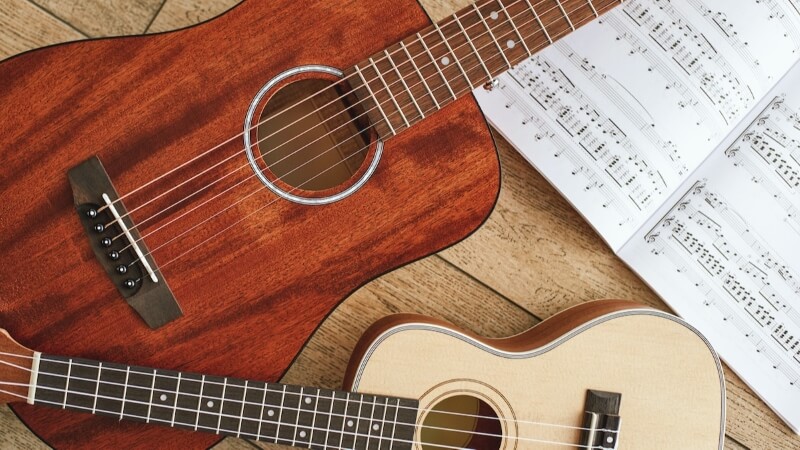
Why are there so many eelectro/accoustic bass ukuleles that have no provision for changing the strings.
Hello there,
Thank you for your comment. I understand your frustration regarding the lack of provision for changing strings on some electro/acoustic bass ukuleles. It is indeed a common concern among musicians.
The reason behind this design choice can vary depending on the manufacturer. In some cases, it may be a deliberate decision to prioritize certain features or aesthetics over easy string changes. However, I agree that having a provision for changing strings is an important aspect of any instrument.
If you are considering purchasing an electro/acoustic bass ukulele, I would recommend doing thorough research on the specific model you are interested in. Look for reviews or reach out to the manufacturer to inquire about the ease of string changes. Additionally, you can also consider consulting with a local music store or luthier for their expertise and advice on the matter.
Remember, finding an instrument that meets your specific needs and preferences is crucial. So, don’t hesitate to explore different options until you find the perfect fit.
I hope this helps! If you have any further questions or need assistance with anything else, please feel free to ask.